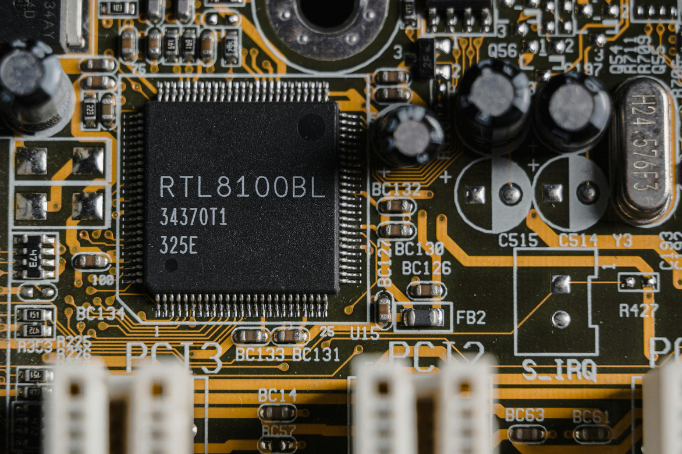The financial and banking industries are very sensitive to time and require accurate time calibration and synchronization. Almost all financial transactions, including wire transfers, bank transfers, and stock purchases and sales, rely on timing to be reliable, compliant, and secure. The real-time clock (RTC) is the tool that stays at the core of preserving this accuracy and serves for tracking time within electrical systems. Learning why real-time clocks are important to financial and banking systems requires the examination of the relative advantages in matters concerning transaction precision, compliance with the law, protection from fraud, and integration of services within networks around the world.

1. Precision in Transaction Timestamping
The financial systems require that events are time-stamped as accurately as possible with the timestamp down to the millisecond. Real-time clocks play the role of providing a consistent timing source for system timing that is crucial for aspects of transaction processing, including order execution and clearing. With volumes of millions of trades happening in seconds, the timestamps that capture the time at which trades start and end are accurate to fractions of a second.
Consider when two traders are purchasing the same stock at the same time, for instance, at the same mili-second. ALSO incorporated a real-time clock to be incorporated into the trading desk; the real-time clock aids the trading system in stamping each order in the correct order, minimizing conflicts on which trader gets priority for the dealing of an order. Altogether, if implemented RTCs weren’t available, it would have been impossible to sustain the quantitative/transactional level of rigour needed for today’s rapid/flash trading systems.
2. Regulatory Compliance
Business entities in the banking industry are closely governed in their efforts to minimize fraud and promote the integrity of the markets. Another of the compliance mandates that are hard to meet is time management and keeping the correct time. Authorities such as the SEC and the ESMA pose special guidelines regarding the synchronization of the clocks in use for transaction logging and reporting.
Laws like the Markets in Financial Instruments Directive II, if used in the European Union, require high-accuracy time stamping of financial transactions since records are important during audits or investigations. Real-time clocks assist in keeping this accuracy, helping institutions to show they meet the necessary timekeeping standards and avoid fines. For instance, the deadline for MiFID II stipulates that the time stamp must be correct up to microseconds before UTC in high-frequency trading. These overriding standards are facilitated by RTCs that are integrated with network time protocols.
3. Fraud Detection and Prevention
While it is especially important for the financial sector, fraud detection heavily relies on accurate time. One common form of real-time clocks is the chronological record of each transaction, through which institutions can identify the common features of fraudulent activity. Through analysing timestamped transactions, it becomes easy for the banks to see anomalies like several transactions from different places in a physically impossible and very short time. In the absence of RTCs, as it will be seen, such distinctions are much more difficult to make, and there is a risk that fraudulent ones will be missed.
For instance, an RTC enables a bank’s fraud detection system to trigger if a person buys something at one place and then buys another thing at a distant place in a few seconds. Real-time clocks are valuable to banks as the clocks help in establishing the authenticity of each transaction Since banks serve as the basis for the tracing of real-time clock information, real-time clocks are a valuable part of any framework with a focus on fraud.
4. Synchronization Across Global Networks
Financial markets are international since some take place at different times and across the world’s financial centres. The real-time clock can therefore be adjusted to obtain focus with a universal time source like the UTC, thereby helping the banks and financial institutions to have a standard form of timing despite the geographical location of the institution.
Synchronization is most crucial in the forex markets, where currencies are traded at any one time across the world. In conjunction with Network Time Protocol (NTP) or Precision Time Protocol, when implemented at the RTC, it keeps trading desks synchronized with global timestamps to record each transaction at its correct precision. This synchronized timing reduces the disparities that might be brought about by the use of local standards promoting harmony and efficiency in interbank operations.
5. Enhancing Data Integrity and System Reliability
This is well understood in financial systems, where data integrity is a crucial aspect of facilitating confidence in banking services. Real-time clocks are central to this process because they help to stop data conflicts from occurring. The banking systems thus can avoid such cases where, due to wrong timing, the data may be written over, duplicated, or even read in the wrong format.
A real-time clock means that changes take a systematic style as transactions, record updates, and data entries mean that vices such as errors which may make the system less reliable, are reduced. Such a degree of accuracy is most necessary in inter-bank operations and when comparing the electronic records of transactions of more than one branch. RTC is used by the banks to timestamp every entry to ensure that it provides a dependable service to the customers, along with detecting and solving interprocess inconsistencies.

6. High-Frequency Trading and Algorithmic Processing
Algorithmic trading makes timing extremely important, especially when compared to any of the previous methods. Automated trading, known as high-frequency trading (HFT), can perform a very large number of trades in a very short period, making money out of microseconds. The effectiveness of these algorithms relies on accurate time facilitated by real-time clocks for capturing and exploiting short-lived market windows.
In HFT, often a split second can mean profits being made by the competitor or huge losses being experienced by a firm. Real-time clocks, in combination with the network synchronized time reference, help to guarantee that the HFT systems exist in a common, accurate time. This synchronization makes it possible to have trading algorithms effectively place their orders, to do so in the right order, and at the right time. However, without the RTCs, trading at this higher frequency would be useless, as getting the timing even slightly wrong can lead to the wrong price assessments and wrong orders being placed.
7. Ensuring Reliability in Backup and Disaster Recovery Systems
The institutions that handle finances need to have strong business continuity and disaster recovery solutions in case of technical losses or hacks. Real-time clocks are helpful in enhancing the dependability of these systems since system time bases, together with data logs, may be used for synchronizing data with system time stamps during restarts.
Additionally, where there is a failure, accuracy in time helps in system renewal without data input duplication or loss. This assertion is important when it comes to the proper definition of recovery points in databases and backup systems because, by the use of RTCs, one is assured of a stable reference point in the recovery of data to the last possible state. For instance, a bank may need to record the time each transaction or event occurred to reconcile a database, something that can only be provided by real-time clocks. This capability helps to sustain customer and partner trust because data integrity is a basic requirement for organizational functioning.
8. Role in Auditing and Forensic Analysis
Although seemingly obvious, having the ability to pinpoint the specific date or time of a transaction is critical when performing an audit or an investigation. A real-time clock analyzes a time series of specified events, allowing forensic investigators to detect the source of discrepancies or threats. The high precision provided by RTCs helps to match every transaction and action in the financial system and therefore facilitates tracking of intrusions and other undesirable actions.
For instance, whenever an auditor is required to investigate a certain financial transaction that he/she considers fraudulent, then one can use the real-time clock to associate the transactions with logs, closed-circuit television records, and other documents. Such correlation makes examination more comprehensive and offers definitive proof of when or if a given transaction occurred, which enhances the level of transparency in the financial system besides increasing accountability.

9. Managing Distributed Ledgers and Blockchain Transactions
Blockchain and other kinds of distributed ledgers are disrupting the financial sector by introducing a decentralized method of maintaining records of transactions. Real-time clocks are important in these systems, primarily in the timing of each transaction appropriately to ensure that records are intact and in order.
At times, in blockchain systems, each transaction has to follow the order in the ledger that is being added. To support this sequence, real-time clocks are used to give orientation about time. This accurate timestamping is very important because blocks in the chain must indicate the correct time to avoid things like double-spending or reversing transactions. Real-time clocks sustain the timeline, which helps in the reliability of blockchain-based financial records.
10. Improving Customer Trust and Experience
Finally, the accurate timekeeping being offered by RTCs improves the confidence of the customers. As the clientele of a business demands the processing of transactions to progress with increasing velocity and efficiency, timely bill-keeping instills confidence in the customer on the possibility of an immediate transfer or receipt of their money. This tool is useful in alerting customers, updating balances, and confirming transactions instantly, hence making the banking and financial institutions provide their customers with a favourable service.
For instance, when a customer deposits or transfers money, the bank gives an RTC to record the time at which the business occurred. Such a timestamp is useful for the bank to present evidence to the customer as quickly as possible since it is very helpful in cases of dispute or historical records of transactions. The primary advantage of having accurate time tracking from a bank is the ability to use it as a reference when future financial transactions occur, which would encourage long-term engagement with the institution.
Conclusion
A real-time clock is an essential timing element in applications of high accuracy, security, and reliability of the financial and banking systems. From exact timestamping of a transaction to compliance with regulatory rules, control over fraudulent actions, and data synchronization, RTCs are at the centre of technological layers that facilitate financial activities. Where agility and accuracy determine industry success, RTCs provide the timekeeping infrastructure that financial institutions require to satisfy clients and regulators and solve operational issues. This means that RTCs will remain strategically relevant to the financial systems of the future as technology becomes increasingly genuine and lifelike.
About The Author
Elena Tang
Hi, I’m Elena Tang, founder of ESPCBA. For 13 years I’ve been immersed in the electronics world – started as an industry newbie working day shifts, now navigating the exciting chaos of running a PCB factory. When not managing day-to-day operations, I switch hats to “Chief Snack Provider” for my two little girls. Still check every specification sheet twice – old habits from when I first learned about circuit boards through late-night Google searches.
